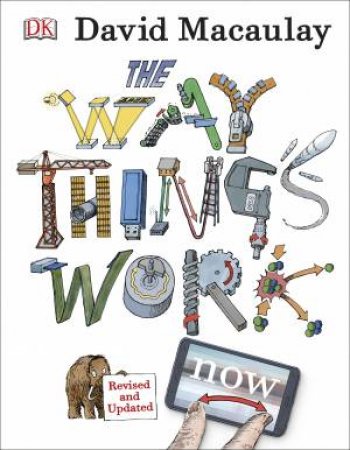

The mammoth is uncomprehending but so lonely that he allows this to happen. This beast enters the Digital Domain-drawn as an actual castle-and submits to being recorded, measured, and reproduced digitally. The digital section’s guide is a totally befuddled mammoth, the last of his species. In the new edition, the mammoth-world frame gives voice to the confusion the reader might feel in the face of the new technology. The mammoths’ bodies show how force, pressure, and static electricity work. This world is a medieval-prehistoric-early modern mashup, where mammoths live alongside humans, and serve as their companions, beasts of burden, and experimental subjects.

In each section, framing stories are narrated by a traveling scientist-a sort of Renaissance man-who goes from village to village, observing people’s everyday practices. The idea is to adopt a persistent curiosity in the face of immensity-not always an easy thing to do.Īnother hallmark of the Way Things Work books is the gently humorous alternate history Ardley and Macaulay have created to illustrate physical principles. (It’s a very 20 th-century idea!) Arbesman’s recommendation for adults and children living in a newly complex world is that we stop worrying about completism and start approaching technology in the same way field biologists think of their studies of nature: observing phenomena, putting them in categories, all the while anticipating that you can never know everything.

For years, adults have extended the promise of total knowledge to students who apply themselves to understanding physical technologies like the steam engine, or the airplane. As the complexity scientist Samuel Arbesman writes in his recent book Overcomplicated: Technology at the Limits of Comprehension, the intricacy of modern technologies-the code behind the guidance system used to land planes-has made them opaque, even to people whose job it is to work with them. How does the Macaulay approach translate to the unseeable? The Way Things Work Now is longer than its predecessors it has a whole new section on all things digital. Now Macaulay has updated The Way Things Work, which was first published in 1988 and revised in 1998. In addition to co-writing The Way Things Work with Neil Ardley, Macaulay has also published a primer on the human body ( The Way We Work) as well as shorter books on individual masterworks of human engineering ( books about cathedrals, pyramids, toilets). Macaulay’s school-age readers have fewer and fewer everyday chances to witness the technologies of their world in motion.


 0 kommentar(er)
0 kommentar(er)
